3D printing is a method of creating a physical three-dimensional object from a digital model. 3D printing is an additive process, meaning that the object is created by adding material layer by layer. The bulk of the 3D printing machines available at Fabville use Fused Filament Fabrication (FFF) technology - sometimes referred to as the trademarked term Fused Deposition Modeling (FDM). In FFF, plastic filament is pushed through a small hole in a heated metal nozzle. That nozzle is attached to a robot that can move the nozzle left-to-right (X axis), front-to-back (Y axis), and up-and-down (Z axis). The printer extrudes a layer of the model in two dimensions (X,Y) and then moves up a fraction of a millimeter to draw the next layer, continuing until you have a completed 3D object.
FabVille also houses a FormLabs Form 2 Resin SLA 3D printer. Unlike FDM, resin (also known as stereolithography, or SLA) 3D printers use a UV laser (or UV LCD) to cause a liquid resin to harden. Instead of adding a layer on top of another layer using a robot controlled nozzle, a base is lowered into a resin vat and a layer is hardened by projecting a UV image on it or by moving a UV laser across it. The base is then incremented up, and the next layer is hardened and so on.
To prepare a 3D model for printing, it must be processed with a computer program called a slicer. A slicer, like the name implies, “slices” 3D models into layers that the 3D printer can then print in sequence to create a stack of fused layers that forms the printed object. Fabville uses a slicer called Cura for all FDM 3D printers, and the proprietary FormLabs PreForm software for the Form 2.
Please visit our MACHINES section to view the current 3D printers available at FabVille.
